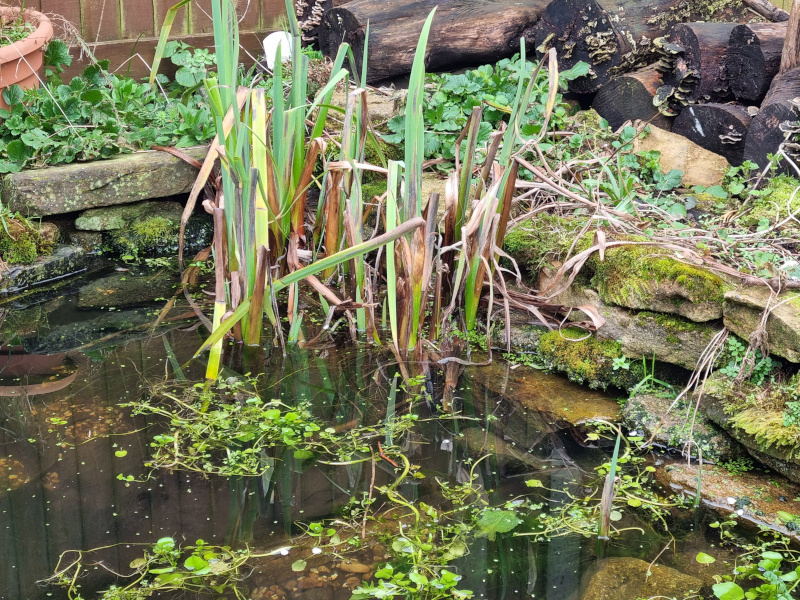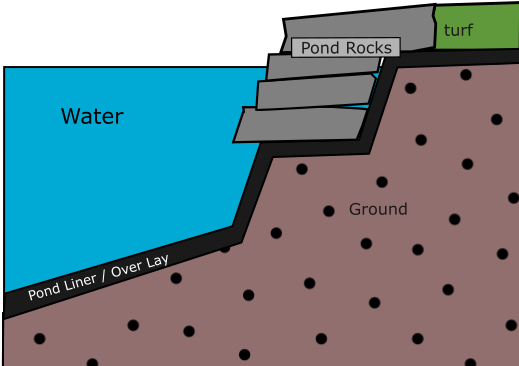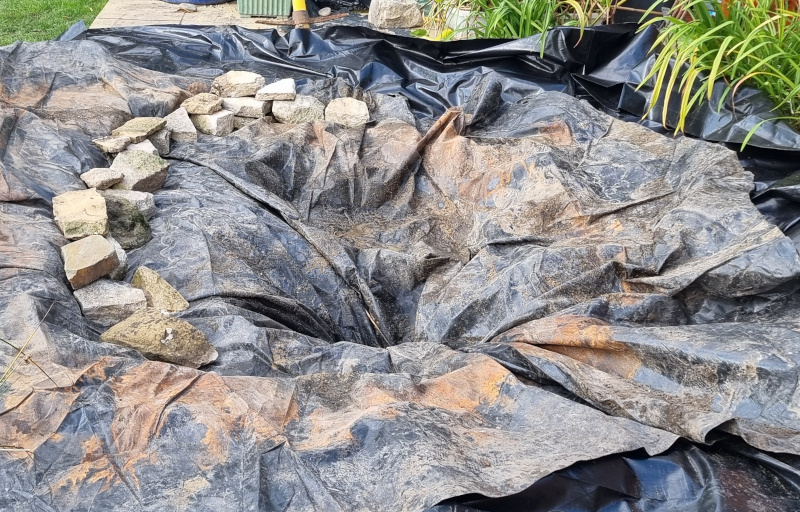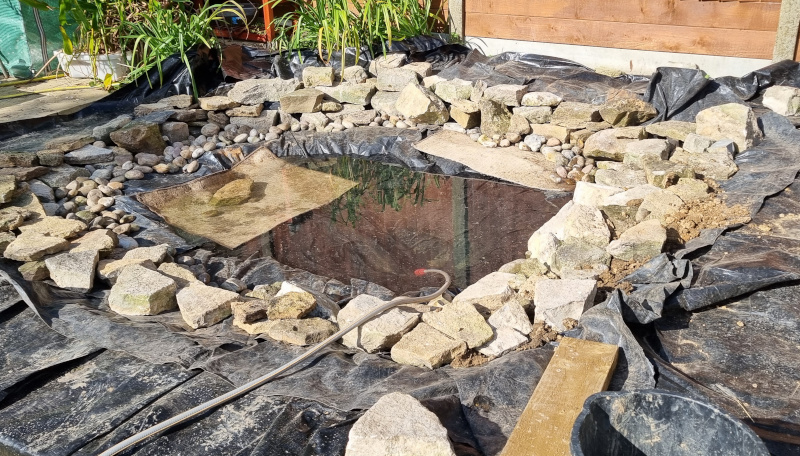Edging Types
The edge of a wildife pond is part of the pond that does need a bit of thinking, and it can be the part which is hard to make look nice, at least straight away.
The edging serves the following purposes:
- To hide the unsightly liner / overlay and give a more natural and attractive look.
- To protect any exposed liner, although ideally there shouldn’t be any liner exposed.
Dry Stone Wall edging
If you have steps at the edge in your pond and you have enough rocks and stones you can lay a mini dry stone wall starting as far below the water level as possible. This gives a very attractive natural look especially when the stones starts to attract moss. If you start the wall some depth below the water line, the wall will to continue hide the underliner when the water level drops in the hotter weather.
This photo illustrates dry wall type edging, note the wall starts well below the water line.

This not only looks great, but it also provides lots of hidy holes for creatures such as frogs and newts.
Cutaway of dry wall edging

The downside is it does take quite a lot of rocks which can be expensive if you are buying them or time consuming if you are scavenging them. This type of edging takes additional time to plan and build although the end result can be very satisfying
Simple earth and plant edging
The pond edges are covered in earth and planted up with grass and edging plants. This is very simple and it is really easy to do. The downside is the liner and underlay will be more exposed. Plants and grass around the edge are prone to draw water lowering the pond level more quickly than evaporation alone.
Rocks or stones edging
This is a common edging strategy for nature ponds as it is pretty straightforward and looks good. The downside is the liner is harder to cover and will certainly become more visible in summer as the evaporation causes the level to drop.
Loosly lay the edge.
If you have carved steps into the top of the pond then, now you can loosely lay your pond edging rocks into the steps in the approximate positions. This is just to give you an idea of how it is going to look and hold the liner and overlay into position and prevent it popping up, moving or generally flapping about.
You don’t want all of your rocks in yet as until the pond is full of water as the liner is prone to movement until it has been filled and found it’s shape.

Add any silt or sand to the bottom of the pond and the shelves
This is a good time to add any substrate such as sand to the bottom of the pond and the shelves. Doing it now will minimise the discolorisation and general cloudiness of the water compared to dropping in sand or silt after the pond is full.
Begin the fill
With the liner and underlay in place and some rocks holding the liner in place, you can begin to fill the pond with water.
Ideally the water would be rainwater rather than tap water. Tap water often contains extra nutrients which helps algea bloom. However, unless you have a full rain water butt it may be that tap water is your only choice.
Add some more edging
As the pond is filling the liner will now be stretching and fitting snuggly in the pond. You can continue to add some more edging rocks and pebbles. Now it should start looking like an actual pond, even if it is a little sparse at this point.
